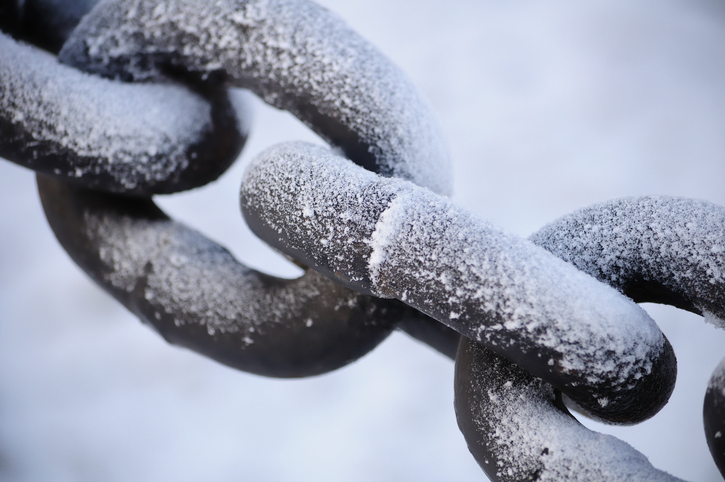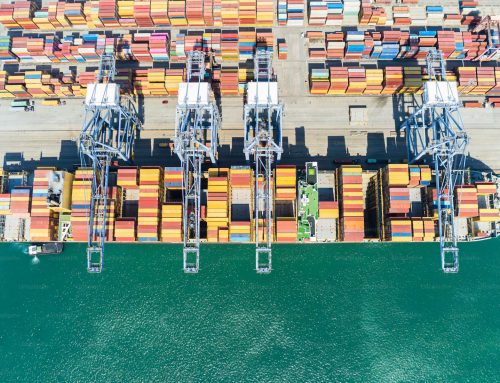(by the team of the HUMLOG Institute: Ioanna Falagara Sigala, Gyöngyi Kovács, Amin Maghsoudi, Wojciech Piotrowicz, Isabell Storsjö, Diego Vega)
As various COVID-19 vaccines are in the making, there is a lot we can do to prepare for their handling including necessary cold chain and ultra-cold chain solutions. Here is a fact sheet with reminders and recommendations.
General issues with temperature control:
- Control temperature range,
- Control exposure: deviation from range, time period of exposure
Typical issues with vaccines:
- Each
vaccine comes with their own temperature control requirements
- e.g. Vaccines with live components: cannot freeze (kills the live component)
- Very special: Ultra-cold chain (minus 70-80 degrees C)ones, e.g. ebola vaccine
- NB! Pfizer’s potential vaccine needs an ultra-cold chain, but other COVID-19 vaccines in the making need different temperature ranges.
Typical issues with temperature control supply chains:
- Sticky
points aka where temperature control usually breaks down:
- Materials handling (offloading, cross-docking, intermodal transportation, customs clearance)
- At the user’s end: health care centres without stable electricity, patients (if they can buy a vaccine themselves)
- Needs dedicated handling spaces (warehouses, cross-docking spaces, special units at customs) and equipment that works with the required temperatures
- Needs special transportation, e.g. reefer containers (the ultra-cold chain a combination of special packaging + special reefer containers). Some of containers need electric connection during transport and storage.
- Vaccines need special medical clearance for materials handling! (i.e. staff that has the required certifications in warehouses, transportation etc.)
- Don’t forget about the kits! (e.g. syringes, gloves, test swabs, lab equipment etc.) to go with the items. Note, they may need different temperatures than the vaccine itself!
- Packaging
sizes matter in light of how long you can open a package
- Peri-urban/rural distribution
- Avoiding too many people coming to a vaccination centre – disease control!
Administering vaccination programmes
- Ideally not overloading the same health care centres
- Segregation of patients (sick) from those to be vaccinated
- Train (more) people to administer vaccines – separate capacity from testing stations will be needed
Industry initiatives for handling temperature control:
- GDP – good distribution practice, esp. in pharma
- CEIV – IATA’s pharma distribution practices for freight forwarders (not just airlines)
Current initiatives for potential COVID-19 vaccines:
- UNICEF Covax: pre-procurement of items for the kits (e.g. syringes), stocking up
- Logistics service providers developing more temperature control warehouses around the world
- Pfizer developing their own cold chain packages
Recommendations, aka what different organisations and countries can do to prepare for it now:
- Increase
cold chain, and ultra-cold chain capacity in warehouses and transportation
- Actual spaces and equipment (warehouses, refrigerated containers, vans, trucks, railway carts)
- Cold chain training across whole supply chain (warehouse operators, drivers, medics)
- Certifications (GDP, CEIV, medical materials handling requirements)
- Production changeover in transportation: re-equipping existent aircrafts, containers, vehicles for the ultra-cold chain
- Production changeover in warehousing, e.g. setting up freezer farms near airports and other hubs
- Some solutions exist already in the food and pharmaceutical sectors
- Be part of
vaccine procurement initiatives – e.g. the EU has one for all EU countries
together, and has signed agreements with several potential providers
- Joint procurement may give better purchasing power, but this is a sole supplier situation, after all
- Prepare tenders and advanced purchase agreements either individual or jointly with other organizations
- Remember equity in health
- Start off
getting the rest of the kit together! Vaccine distribution will require all the
rest of it, from materials to set up vaccination centres, to actual testing and
vaccination kits
- Potential reuse/adaptation from the Ebola vaccination campaign in challenging contexts
- Benchmark/best practice from INGOS continuously involved in EVD (e.g. MSF, IFRC, ICRC, UNICEF)
- Develop containers for smaller quantities (the current Pfizer solution may not be applicable for smaller populations)
- Check existing inter-agency health kits for vaccination kits. Add also dry ice for further cooling.
- Start
procuring logistics services and work with logistics service providers to
ensure they have the right equipment and capabilities
- Set up tracking and tracing through the supply chain, to assure correct procedures are followed. Special cold chain tracking devices exist on the market already.
- Design security around the chain, to control and protect the flow.
- Develop
vaccine distribution plans
- Identify places (health care centres, schools, voting stations or other, depending on the current burden in existing health care centres) with good coverage of the population. Know your coverage!
- Identify groups that need to be vaccinated as first (such as those who will administer vaccines later), and define criteria to select locations that will be vaccinates as first (number of cases, density of population)
- Contact and make agreements with transportation and logistics service providers for the last mile distribution
- Collaborate with other organizations or countries for the transportation of the vaccine
- Identify which organisations or sectors within the country could support a vaccination programme, in case if medical system is overwhelmed with COVID19 cases, and identify their needs for training. (Possible organisations include medical humanitarian organisations, the Red Cross movement, in some cases even defence forces.)
- Train people in advance, both in medical logistics, vaccine handling, and for managing vaccination centres
- Set up communication channels, how people will be informed when and where vaccination will take place
- Set up tracking system to identify who already got the vaccine, this is critical when more than single doze is needed
- Assure that all labelling on packages, instructions and guidelines are in all required languages
- Identify and review relevant country laws and regulations, to assure that mass vaccination programme is in line with them
- Analyse risks and create response plans, in case of electricity supply cuts, accidents, missing resources
- Create waste (and re-use) plans for used boxes, gloves, needles and other equipment
- Before going life within the programme run simulation, and exercises to check if plan is realistic
There is a lot more with regards to ethical considerations, trust-building, and even the prioritisation of vaccine recipients etc. Thus, as a final note, please remember that this list focuses on cold chain, and ultra-cold chain capacities and capabilities. Let’s leave the rest to the epidemiologists.
References
Comes, T., Bergtora Sandvik, K. and Van de Walle, B. (2018), “Cold chains, interrupted: The use of technology and information for decisions that keep humanitarian vaccines cool”, Journal of Humanitarian Logistics and Supply Chain Management, Vol. 8 No. 1, pp. 49-69. https://doi.org/10.1108/JHLSCM-03-2017-0006
Jusu, M.O., Glauser, G., Seward, J.F., Bawoh, M., Tempel, J., Friend, M., Littlefield, D., Lahai, M., Jalloh, H.M., Sesay, A.B. and Caulker, A.F., 2018. Rapid Establishment of a Cold Chain Capacity of–60 C or Colder for the STRIVE Ebola Vaccine Trial During the Ebola Outbreak in Sierra Leone. The Journal of infectious diseases, 217(suppl_1), pp.S48-S55, at https://doi.org/10.1093/infdis/jix336
Kachali, H., Storsjö, I., Haavisto, I. and Kovács, G., 2018. Inter-sectoral preparedness and mitigation for networked risks and cascading effects. International journal of disaster risk reduction, 30, pp.281-291, at https://doi.org/10.1016/j.ijdrr.2018.01.029
Vaillancourt, A., 2016. Kit management in humanitarian supply chains. International Journal of Disaster Risk Reduction, 18, pp.64-71, at https://doi.org/10.1016/j.ijdrr.2016.06.002
Other important links
CEIV Pharma: https://www.iata.org/en/programs/cargo/pharma/ceiv-pharma/
Covid-19 WSJ: https://www.wsj.com/articles/covid-19-vaccine-rollout-calls-for-supply-chain-collaboration-logistics-chief-says-11603713612
European Commission – Covid-19: https://ec.europa.eu/commission/presscorner/detail/en/ip_20_1903
Fact sheet on the Ebola ultra-cold chain: https://www.who.int/features/2015/guinea-ebola-vaccine/en/ – the same has been used later in DRC according to WHO logistics
Finnish news on the matter of Pfizer’s vaccine: https://yle.fi/uutiset/3-11641577
ICRC Podcast on lessons from Ebola: https://intercrossblog.icrc.org/intercross-icrc-podcast-episodes/episode-1104-covid-conflict-ebola-drc#sthash.5ZUlD3d1.dpbs=
Inter-agency health kits: https://www.who.int/emergencies/emergency-health-kits
Interim Framework for COVID-19 Vaccine Allocation and Distribution in the United States: https://www.centerforhealthsecurity.org/our-work/pubs_archive/pubs-pdfs/2020/200819-vaccine-allocation.pdf
MSF Ebola response: https://www.msf.org/ebola
UNICEF Ebola response: https://www.unicef.org/emergencies/ebola
Further info
HERoS project, see www.heros-project.eu
HUMLOG Institute, see www.hanken.fi/humloginstitute
Downloadable graphic of the fact sheet:
Contact us with any questions!
- Wojciech Piotrowicz, Director of the HUMLOG Institute, wojciech.piotrowicz@hanken.fi, +358 50 430 8715 (English)
- Gyöngyi Kovács, Erkko Professor in Humanitarian Logistics, HERoS project leader, gyongyi.kovacs@hanken.fi, +358 40 3521 241 (English, Swedish, Finnish)





